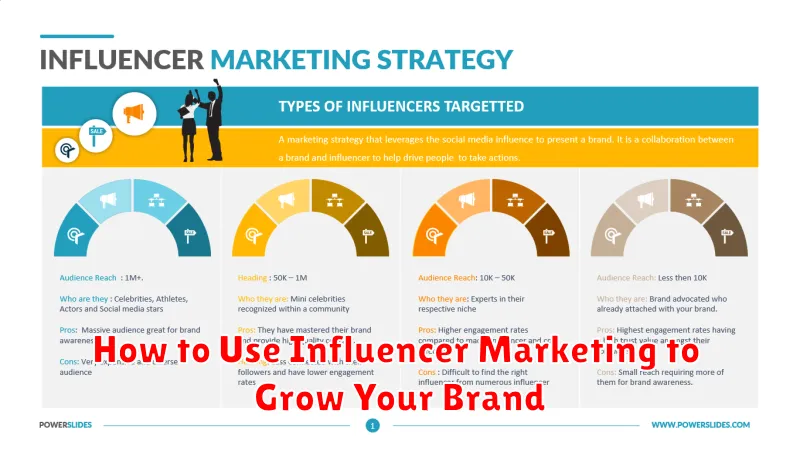In today’s digital landscape, influencer marketing has become an indispensable strategy for brand growth. Leveraging the reach and credibility of influencers can significantly amplify your brand message, connect with your target audience, and drive measurable results. This article will provide a comprehensive guide on how to effectively utilize influencer marketing to achieve substantial brand growth, covering key aspects from identifying the right influencers to measuring campaign success.
Whether you are a seasoned marketer or just beginning to explore the power of influencer marketing, understanding the nuances of this dynamic field is crucial. This article will delve into the strategic steps involved in developing and executing a successful influencer marketing campaign. Learn how to identify influencers who align with your brand values, craft compelling campaigns that resonate with their audience, and ultimately, achieve your brand growth objectives. We will explore the essential elements of influencer selection, campaign development, content creation, and performance analysis to empower you to harness the full potential of influencer marketing.
Why Influencers Matter Today
In today’s digital landscape, consumers are bombarded with advertising. Cutting through the noise and building genuine connections is a critical challenge. This is where influencers come in.
Influencers cultivate trust and authenticity with their dedicated audience. Their recommendations carry weight, impacting consumer purchasing decisions. They provide a direct line to engaged consumers, offering brands an invaluable opportunity to reach specific demographics and niche markets.
By leveraging influencer marketing, brands can enhance brand awareness, build credibility, and ultimately drive sales.
Finding the Right Influencer for Your Niche
Identifying the right influencer is crucial for a successful campaign. Relevance is key. Look for influencers whose audience aligns with your target demographic. An influencer specializing in fitness wouldn’t be suitable for promoting accounting software.
Engagement is another critical factor. High follower counts don’t always translate to high engagement. Analyze the influencer’s posts for likes, comments, and shares. Authentic engagement indicates a dedicated and responsive audience, more likely to interact with your brand.
Finally, consider the influencer’s values. Do they align with your brand’s message and image? A partnership should feel natural and mutually beneficial. A mismatch in values can damage your brand’s credibility.
Crafting Authentic Collaborations

Authenticity is paramount in influencer marketing. Partner with influencers whose values align with your brand and whose audience overlaps with your target market. A genuine connection between the influencer and your brand fosters trust with their followers.
Transparency is also crucial. Clearly disclose the partnership to maintain ethical standards and build credibility. Sponsored content should be identifiable, adhering to advertising guidelines.
Focus on creating collaborative campaigns that allow the influencer’s creativity to shine. Provide a brief and clear outline of your objectives, but empower them to develop content that resonates authentically with their audience.
Measuring ROI of Influencer Campaigns
Measuring the return on investment (ROI) of your influencer marketing campaigns is crucial. It helps justify your spending and optimize future campaigns. While not always straightforward, several key metrics can provide valuable insights.
Engagement metrics like likes, comments, and shares offer a glimpse into audience interest. Reach helps you understand how many unique users saw your campaign content. Website traffic, driven by trackable links and promo codes, directly connects influencer activity to your sales funnel. Finally, conversions, whether that’s sales, sign-ups, or app downloads, are the ultimate measure of campaign success.
Avoiding Common Pitfalls
Influencer marketing, while effective, presents potential pitfalls. Choosing the wrong influencer can misalign your brand message. Focus on influencers whose audience matches your target demographic and whose values align with your brand.
Ignoring authenticity is another mistake. Consumers can spot forced partnerships. Prioritize genuine collaborations where influencers genuinely appreciate your product.
Neglecting measurement hinders optimization. Establish clear campaign goals and track key performance indicators (KPIs) like engagement, reach, and conversions. This data informs future strategies and ensures a positive return on investment.

